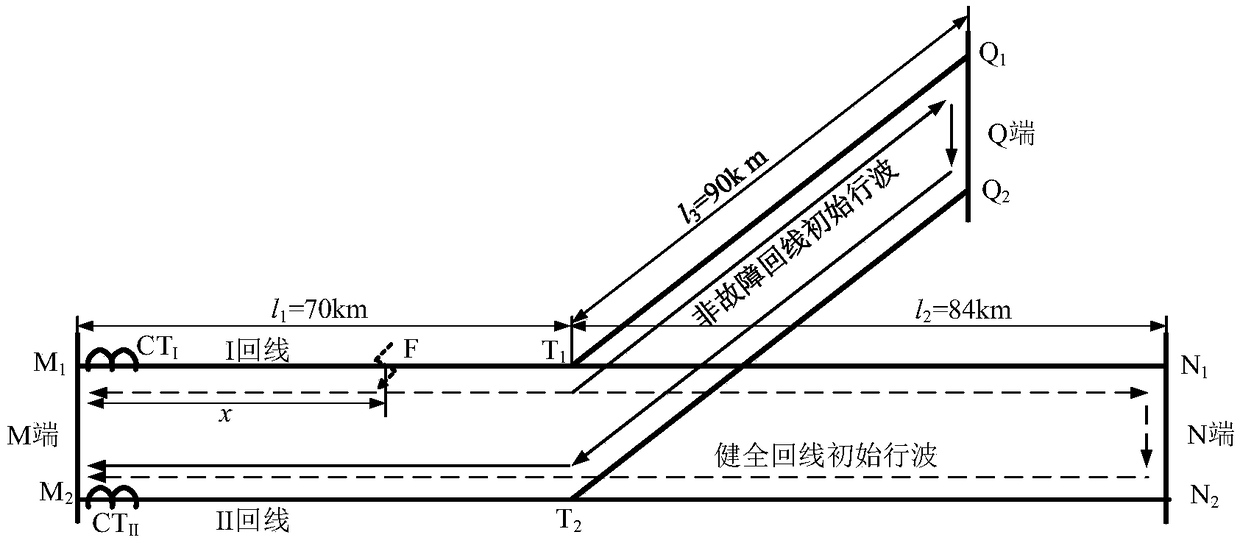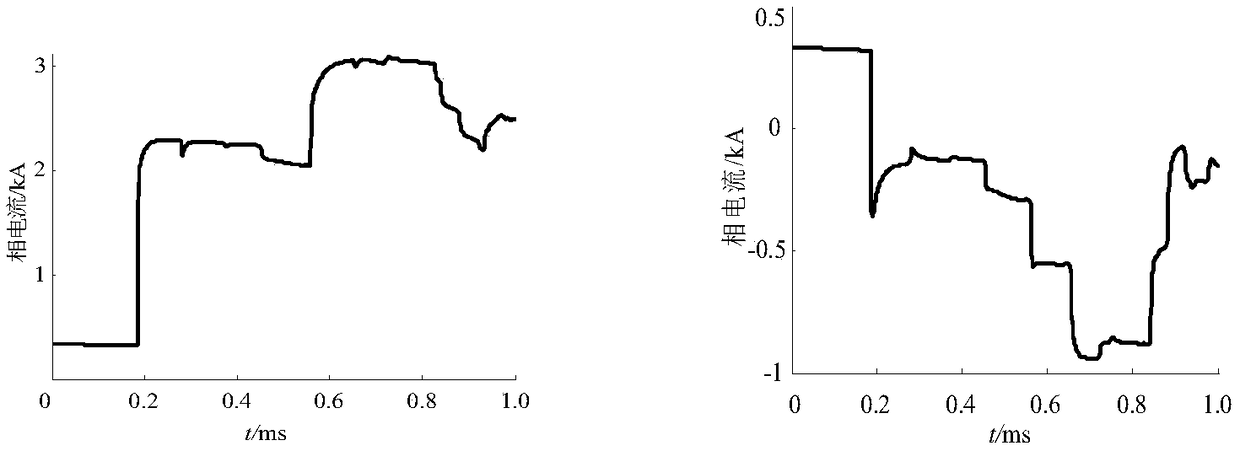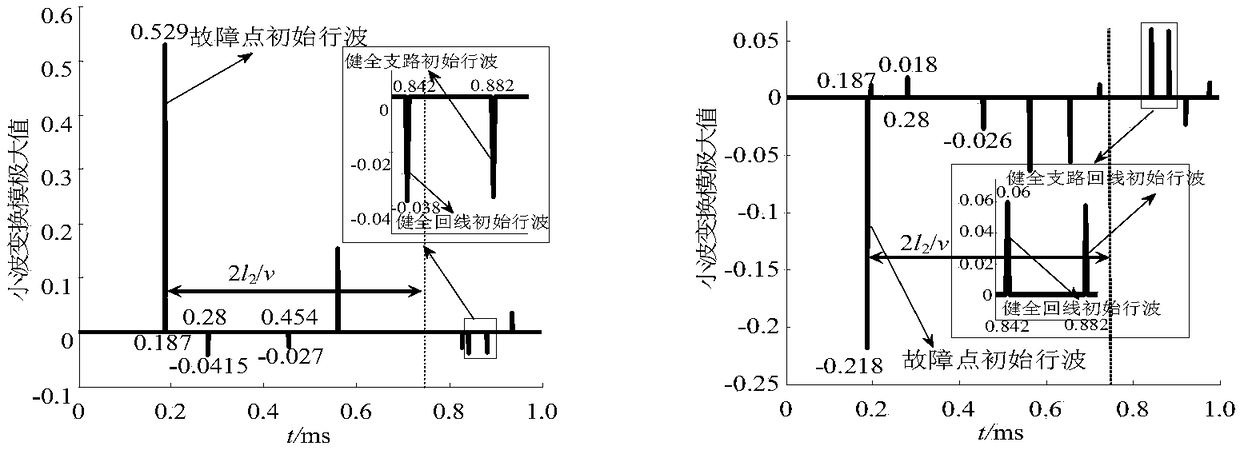Single-end travelling wave range finding method for common-tower double-loop T-joint power transmission line
A transmission line, single-ended traveling wave technology, applied in the direction of measuring electricity, measuring devices, measuring electrical variables, etc., can solve the problems of heavy load, difficulty in obtaining fault information, and high transmission power, so as to reduce difficulty and facilitate reliable distance measurement Effect
- Summary
- Abstract
- Description
- Claims
- Application Information
AI Technical Summary
Problems solved by technology
Method used
Image
Examples
Embodiment 1
[0050] Embodiment 1: as Figure 1-3 As shown, the simulation model of a 110kV AC double-circuit T-connection line on the same tower is as follows figure 1 Shown; Its line parameter is as follows: MT branch line road length is 70km, NT branch line road length is 84km, QT branch line road length is 90km, namely (l 1 2 3 ). Fault location: The I circuit line is 56km away from the M terminal and a fault occurs. The sampling frequency is 1MHz.
[0051] (1) Obtain CT according to the first step to the second step in the manual I and CT II The wavelet transform modulus maximum value of the first traveling wave, it can be easily seen from the above figure that the I loop line a-phase current modulus maximum value is greater than the II loop line a-phase current modulus maximum value, so it can be judged that the fault line is I back to the transmission line.
[0052] (2) According to the second step in the manual, the initial traveling wave head of the fault point reaches the me...
Embodiment 2
[0055] Embodiment 2: as figure 1 , 4 As shown in -5, the simulation model of a 110kV AC double-circuit T-connection line on the same tower is as follows figure 1 Shown; Its line parameter is as follows: MT branch line road length is 70km, NT branch line road length is 84km, QT branch line road length is 90km, namely (l 1 2 3 ). Fault location: The NT branch of the I-circuit line is 94km away from the M terminal. The sampling frequency is 1MHz.
[0056] (1) Obtain CT according to the first step to the second step in the manual I and CT II The wavelet transform modulus maximum value of the first traveling wave, it can be easily seen from the above figure that the I loop line a-phase current modulus maximum value is greater than the II loop line a-phase current modulus maximum value, so it can be judged that the fault line is I back to the transmission line.
[0057] (2) According to the second step in the manual, the initial traveling wave head of the fault point reaches ...
Embodiment 3
[0060] Embodiment 3: as figure 1 , 6 As shown in -7, the simulation model of a 110kV AC double-circuit T-connection line on the same tower is as follows figure 1 Shown; Its line parameter is as follows: MT branch line road length is 70km, NT branch line road length is 84km, QT branch line road length is 90km, namely (l 1 2 3 ). Fault location: The QT branch of the I circuit line is faulted 100km away from the M terminal. The sampling frequency is 1MHz.
[0061] (1) Obtain CT according to the first step to the second step in the manual I and CT II The wavelet transform modulus maximum value of the first traveling wave, it can be easily seen from the above figure that the I loop line a-phase current modulus maximum value is greater than the II loop line a-phase current modulus maximum value, so it can be judged that the fault line is I back to the transmission line.
[0062] (2) According to the second step in the manual, the initial traveling wave head of the fault point...
PUM
 Login to View More
Login to View More Abstract
Description
Claims
Application Information
 Login to View More
Login to View More - R&D
- Intellectual Property
- Life Sciences
- Materials
- Tech Scout
- Unparalleled Data Quality
- Higher Quality Content
- 60% Fewer Hallucinations
Browse by: Latest US Patents, China's latest patents, Technical Efficacy Thesaurus, Application Domain, Technology Topic, Popular Technical Reports.
© 2025 PatSnap. All rights reserved.Legal|Privacy policy|Modern Slavery Act Transparency Statement|Sitemap|About US| Contact US: help@patsnap.com



